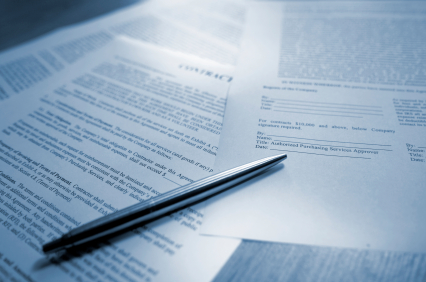
South Korean Medical Devices Market in Brief
The document issued by the MFDS describes the current market of medical devices. According to the document, the size of the markets grows significantly year by year. The growing number of South Korean medical device manufacturers exports various medical devices, such as ultrasound imaging systems, dental implants, and implant superstructures, dental X-ray systems, soft contact lens, medical image devices, IVD reagents, biomaterial graft and prosthesis, and many others. Clinical trials related to the domestic medical devices are being held in 166 clinical trial centers duly authorized by the regulating authority.

South Korea National Approach to the Regulation of Medical Devices
The regulatory system established in South Korea regarding medical devices meets the highest international standards of the industry. The legislation that governs all operations with medical devices consists of four tiers:
- Medical Device Act,
- Enforcement (Presidential) Decree,
- Enforcement rules (ordinance of the Prime Minister),
- MFDS notifications (ordinance of Minister of MDFS).
South Korea employs harmonized risk-based classification of Medical devices compliant with the principles set forth by the International Medical Device Regulators Forum (IMDRF), a voluntary association of national regulating authorities collaborating to improve legislation in the sphere of medical devices. The country has already implemented requirements related to the Quality Management System (QMS) to be implemented by the manufacturer (harmonized with ISO 13485) and clinical trials (harmonized with ISO 14155).
The authority also announced the upcoming implementation of the Unique Device Identification (UDI) system intended to improve the exchange with the information related to medical devices. Depending on the particular class in accordance with the risk-based classification, UDI would be implemented in the following way:
- Class 4 (high-risk) medical devices – already implemented in July 2019;
- Class 3 (significant risk) medical devices – to be implemented in July 2020;
- Class 2 (moderate risk) medical devices – to be implemented in July 2021;
- Class 1 (lowest risk) medical devices – to be implemented in July 2022.
MFDS and its Role in the Regulatory Process
The document also provides additional information about the Ministry of Food and Drug Safety as the regulating authority responsible for ensuring that all the devices allowed to be marketed in South Korea comply with the applicable safety and performance requirements.
The MFDS consist of:
- the Medical Device Safety Bureau (focused on the development of policies and standards, processing the information on incidents),
- the Medical Device Evaluation & Research Department (responsible for the assessment of medical devices, research, and innovations), and
- 6 Regional Branches (carrying out QMS audit, issuing business licenses required to operate in the sphere of medical devices and post-market surveillance).
In order to increase the effectiveness of performing its functions, the MDFS actively collaborates with the independent entities. In the course of such collaboration, the MDFS designates the following entities:
- The Medical Device QMS Audit Institutions,
- The Medical Device Testing Laboratories,
- The Technical Document Review Agencies,
- The Medical Device Clinical Trial Centers, and
- The GLP Laboratories.
The structure of the MDFS also includes special departments focused at supporting innovative technologies in the sphere of medical devices and assisting medical device manufacturers working in this sphere in placing their entirely new medical devices on the market. According to the document, in order to be determined as an “innovative”, the device in question should be based on the cutting-edge technologies and provide higher safety and effectiveness in comparison to existing medical devices already placed on the market. Such devices should be subject to priority review to accelerate the regulatory procedures and make them available to the healthcare professionals and patients as fast, as possible. The companies developing such devices could also apply for the support provided by the state (government-funded projects).

South Korean Medical Devices Regulation
South Korean legislation in the sphere of medical devices provides detailed requirements related to In-Vitro Diagnostic (IVD) medical devices. In particular, it includes risk-based classification, simultaneous review for the device itself, and the medicine it has been developed to be used with.
The particular registration pathway to be used depends on the class of the device in question under the South Korean risk-based classification.
- Class I (lowest risk) medical devices should be subject to the registration under the notification procedure;
- Class II (moderate risk) medical devices having a substantial equivalent (similar medical device already placed on the market, SE) are required to comply with the conformity requirements and the appropriate certification,
- Class II medical devices having no substantial equivalent (entirely new medical devices, NSE), together with Class III and IV medical devices should be subject to review and approval.
It is also important to mention that the MDFS is responsible only for Class II NSE, Class III, and IV medical devices, while Class I and Class II SE medical devices are falling within the sphere of responsibility of the National Institute of Medical Device Safety (NIDS).
In order to assist medical device manufacturers, and other parties involved, with maintaining compliance with applicable safety and performance requirements, the MDFS issues special guidance documents dedicated to the most important aspects related to the requirements and regulatory procedures to be performed when placing the device on the market.
The requirements medical device manufacturers should meet in order to be allowed to place their devices on the market include, among others, the requirements related to the Quality Management System. In particular, the QMS established by the manufacturer should comply with the national requirements based on the international standard ISO 13485. The manufacturers producing Class II, III and IV medical devices should be also subject to the mandatory on-site audits, while for the manufacturers of Class I medical devices such audits are elective. Such audits should be performed by the QMS Audit Institutions that are the independent organizations duly designated by the authority. The audit should be performed upon request submitted by the manufacturer in the form of application, and in collaboration with the MDFS auditor. Depending on the results of the audit, the QMS Audit Institution is entitled to issue the QMS certificate, require the manufacturer to implement certain corrections or to notify the manufacturer about the prohibition of distribution due to the major nonconformity of if the minor nonconformities identified during the audit have not been corrected upon the appropriate request issued by the Institution.
Depending on the purpose, the audit could be:
- An initial audit carried out to confirm the QMS conformity,
- A periodic audit performed at least once within 3 years after the initial audit,
- An audit to approve the changes to the manufacturing sites as notified by the manufacturer, and
- A supplementary audit performed in case of adding a product from another group.
Summarizing the information provided here above, the document issued by the MFDS covers the most important aspects related to the regulation of medical devices in South Korea.
How Can RegDesk Help?
RegDesk is a next-generation web-based software for medical device and IVD companies. Our cutting-edge platform uses machine learning to provide regulatory intelligence, application preparation, submission, and approvals management globally. Our clients also have access to our network of over 4000 compliance experts worldwide to obtain verification on critical questions. Applications that normally take 6 months to prepare can now be prepared within 6 days using RegDesk Dash(TM). Global expansion has never been this simple.
Sources:

